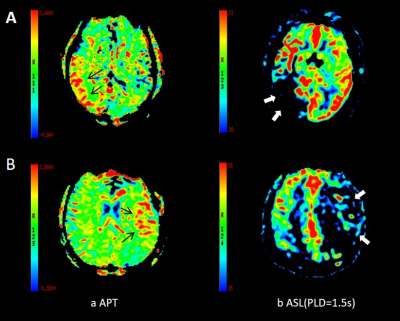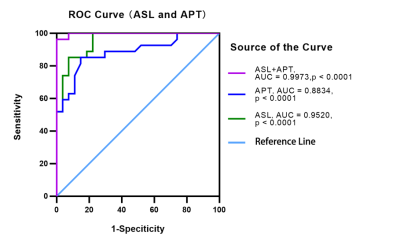Kunjian Chen1, Weiqiang Dou2, Xinyi Wang1, Weiyin Vivian Liu2, Xinyu Wang1, Huimin Mao1, and Yu Guo1
1The First Affiliated Hospital of Shandong First Medical University, Jinan, China, 2MR Research China, GE Healthcare, Beijing, China
1The First Affiliated Hospital of Shandong First Medical University, Jinan, China, 2MR Research China, GE Healthcare, Beijing, China
APTw
imaging may be used as one effective method in diagnosing symptomatic
intracranial artery stenosis, and provide additional clinical value on the
basis of 3D-ASL imaging.

